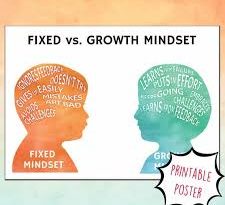ESCAPE ROOMS AND BREAKOUT GAMES. Some ideas for topic 18 on games.
It is a fact that playing is in children´s nature; and this is really the psychological principle underpinning the concept of gamification. This term may be defined as the application of gaming mechanics to non-gaming environments, that is, making learning more “palatable” to children. It is no wonder that this strategy is gaining momentum in FL classrooms, since this hidden and fun practice is more likely to engage young learners and instil a taste for the foreign language area.
Modern curricula are aware of this reality, and this is the reason why the methodological suggestions for our area stress the role of games and collaboration as invaluable resources to promote practical and purposeful use of a foreign language.
Creating an escape room can be in itself an ideal project. As we know, in this game children are expected to solve challenges until they eventually are able to “escape” from the classroom.
In order to do so, first and foremost we should imagine the context and think of what we want children to learn in this learning scenario. The next step is immediate, once we plan the “linguistic benefit”, we must devise and define in simple terms the “locks” and the tasks students shall accomplish to come up with the appropriate response which “unlocks” the way to escape from the classroom. These can be gapped words or sentences, riddles, puzzles (i.e. ordering jumbled sentences) and a long etcetera, as vast as your imagination.
As shown in the video, a kind of “escape room shower” or soft implementation of this resource can be that of breakout games. However, it is of prime importance to remember the role of the teacher as designer of attractive learning experiences. Without a shadow of a doubt, plenty of times success or failure depends on the teacher´s ability to enter the fictional space of the game.
How shall we know if it works? Just try your hand, and you will soon find out.
Script:
Last fall our fifth-grade students designed a breakout edu game a game that consists of keys boxes and/or mystery items. the goal of the game is for the players to solve a series of challenges, riddles and mysteries to break out of the room before times up.
Our students were asked the following driving question: how can you design a breakout edu game for your peers? Next year I hope to have students create breakout edu games for 3rd and 4th graders, that they can play during free choice time in their classes.
Students first built their own wooden boxes. I made a separate video tutorial on the process of creating it wouldn’t break out edu box. the link to the video is in the description below. Here’s some footage of our students creating their breakout edu boxes.
After building their boxes, students used a design thinking process to design their game; and empathize stage they gained an understanding of their peers through a Google Forms survey that contained questions about their interests and their preferences and games.
Next year we hope to add time for actual one-on-one interviews. They also gain an understanding of the breakout edu games by actually playing one of them themselves. In the IDH stage students brainstormed ideas for the game and then created their game items and a prototype stage. Finally, in the test stage students set up their boxes and items and then played each other’s games. At the end of the game, players placed
sticky notes onto boxes that contain valuable feedback, that the game creators can use to improve their own games.
Thank you for watching…



Thank u for sharing 🙂
Thanks for reading!!!